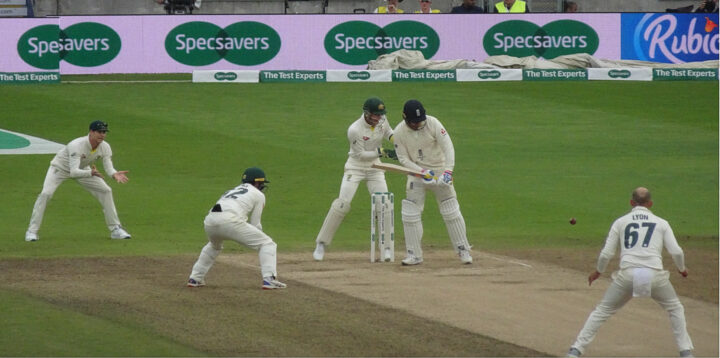On the eve of what turned out to be our 0-5 whitewash in India, Cricinfo’s Madhusudhan Ramakrishnan described the series as England’s ‘best chance’ to rewrite their woeful ODI record on the subcontinent. Well, you can’t spell Madhusudhan without the word ‘mad’.
To be fair, Mr Ramakrishnan had a point in theory. India were without Virender Sehwag, Sachin Tendulkar, Zaheer Khan and Yuvraj Singh. However, what the Indian media overlooked was that the tourist were also depleted: Alastair Cook’s team was missing James Anderson, Stuart Broad (i.e. both opening bowlers), plus Eoin Morgan, who has been our most productive ODI performer in recent times. We also missed the recently retired Andrew Strauss, who was the hero of England’s tie against India in the World Cup.
The truth is, however, that the injuries were never likely to influence the result. There were broader issues in play – most notably the fact that England have always been utterly lamentable at limited overs cricket in the subcontinent. It was always been thus, and probably always will be. On reflection it was somewhat foolish to expect Alastair Cook, a rookie captain, to lead a team containing a number of rookies to victory in alien conditions.
Far more experienced England teams have been stuffed in ODIs against India, Sri Lanka and Pakistan. Why did we expect this lot to be any different? Beating India at home, at the beginning of the English autumn, when the pitches were greener than Jonny Bairstow and Ben Stokes, was not particularly surprising. Besides, despite England’s 3-0 win, several observers, including the deceptively astute Sanjay Manjrekar, noticed how England struggled against Ashwin and Jadeja. It was a glimpse into the future.
Some India fans have proclaimed India’s 5-0 ‘revenge’ as evidence that they’re a superior side, and that England would be whitewashed in a test series in India too. Of course, this is balderdash. England’s pace bowling is superior to India’s and our batsmen play spin a lot better when there is no pressure to score at five or six runs per over. The most likely result, if the two teams started a test series tomorrow, would be a 0-0 stalemate. England have improved markedly in test matches overseas, but we’re still total donkeys in 50 over cricket. Remember we lost the ODIs against Australia 1-6 after winning the Ashes in dominant fashion.
England’s basic problem is that our batsmen are far too orthodox and classical to succeed in 50 over cricket. With the exception of Pietersen, we’re unable to manipulate the strike and hit the ball into gaps. Neither are our batsmen particularly proficient at clearing the ropes.
Ian Bell, for example, has exactly the same problem as Michael Vaughan and Matt Prior – both of whom are/were elegant test batsmen, but totally unsuited to modern one-day cricket. You will never find more orthodox or aesthetically pleasing drivers of the cricket ball, but ask Prior or Vaughan to manipulate singles or hit sixes and they’re totally lost. That’s why they averaged over 40 in tests, but mid-20s in ODIs.
As the most unorthodox (and strongest) English batsman, it’s no surprise that Pietersen has by far the best record of any current England player in the subcontinent. He also looked head and shoulders above our other batsmen in the recent whitewash. Although Trott also made runs, he looked nowhere near as fluent.
Unfortunately, I simply can’t see the situation improving in the foreseeable future. Young cricketers in England are always going to be taught to bat in an orthodox fashion. Because our pitches favour seam bowling, emerging players will always be taught to play straight, get forward, and nullify movement off the seam and in the air. Opening the batting will always be about the art of survival, not the ability to swing from the hip; our pitches won’t allow for anything else.
Every time a young English player arrives on the subcontinent, he is being asked to do something that’s totally alien to him. You’ve got to feel a bit sorry for the likes of Jonny Bairstow. How many Ashwin’s play league cricket in Yorkshire? And how many times has he faced canny spinners on slow, dry, turning wickets?
The argument can be turned around, of course. India will probably never be good at test cricket in England. They might pick up the odd win, but overall they’ve been soft touches overseas for many a year. The results this summer speak for themselves. Suresh Raina and Yuvraj Singh were an embarrassment against the short ball. They looked as hopeless as England’s batsmen do against spin.
Indian’s batsmen don’t face fast bowling on juicy pitches at home, so you’ve got to feel sympathy for them. Meanwhile, the IPL will simply make things worse – young Indian players won’t feel the need to master English conditions if they can make millions of rupees playing for the Punjab Party Poopers in the annual slog-fest.
So what’s the solution? Do we simply accept that England will never be competitive in ODIs on the subcontinent? I fear so. Furthermore, because every other World Cup is held in Asia, and because we’ll have a constant supply of ODIs in India, Sri Lanka, Bangladesh and Pakistan (when they start playing at home), we’ll probably never accumulate enough points to become number one in the ODI rankings – no matter how well we do at home and elsewhere.
Although the situation isn’t completely without hope – in time, England might produce a team so talented that it eventually masters all conditions – the odds are clearly against it. In order for this to happen, more England players will need exposure to the IPL. This isn’t easy of course. It means missing the start of the domestic summer and being perceived as a money grabber.
What’s more, who says T20 cricket is the ideal preparation for ODIs, when picking up singles and rotating the strike is the order of the day? His stint in the IPL certainly hasn’t helped Ravi Bopara.
The other option, of course, is that young English players earn contracts to play in Indian and Sri Lankan domestic cricket. But can you really see this happening? It’s about as likely as Ravi Shastri being caught on camera wearing union jack boxer shorts.
Andy Flower is a shrewd man and an excellent coach. He prepared England for this series by devising a series of drills designed to combat spin. Our batsmen worked on using their feet, hitting the ball down the ground, and sweeping the ball into gaps. Even though the current England side is by far the best prepared and most professional we’ve ever had, the team still failed miserably. So what more can we do? Unfortunately, I fear the answer is ‘nothing’.
James Morgan









Spot on. Nowt more to add really. One thing you could possibly have discussed is the relative performances of the seamers – by the same token our quick men are conditioned to hit a ‘good’ line and length which in a 50 overs game in India is useful for the first 10 overs, if that.
What no outrage at calling England payers donkeys? ;)
They attach highest value to Test Cricket and Ashes is their No.1 priority, which is OK.. But they are certainly apathetic towards limited overs cricket.
With Anderson, Broad, KP, Morgan n Chef in their ranks, I see no reason, why they can’t do better in ODIs and T20.
You shed indifference and you can do better.. Remember England beat India in India, to reach finals of 1987 Reliance World cup under Mike Gatting.